- Author: Mackenzie Patton
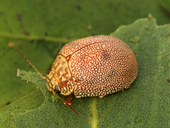
Eucalypt trees have become abundant in the California landscape, but so have the many invasive eucalypt pests that have arrived in California in the last couple decades.
In the fall of 2022, yet another invasive pest was added to the hoard of beetles, psyllids, and gall wasps that attack eucalypt trees. The dotted paropsine leaf beetle (Paraopsis atomaria) was found on a lemon scented gum tree (Corymbia citriodora) in Los Angeles County. It was the first report of the dotted paropsine leaf beetle in North America, and it has since become more problematic throughout Southern California. Currently the extent of the spread is unknown.
Like eucalypt trees, the dotted paropsine leaf beetle is...
- Author: Beatriz Nobua-Behrmann
- Author: Randall Oliver
- Posted by: Elaine Lander
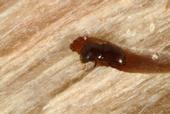
Two identical looking species of wood-boring beetles, collectively known as invasive shothole borers (ISHB), have killed thousands of trees in Southern California and pose an ongoing threat to California's urban and wildland forests. These beetles, which are not native to the United States, were first identified in Los Angeles County in 2012 and have since spread to six other counties: Orange, Riverside, San Bernardino, San Diego, Santa Barbara, and Ventura.
Beetles, Fungus, and Impact
The polyphagous shothole borer (Euwallacea fornicatus) (Figure 1) and the Kuroshio shothole borer (Euwallacea kuroshio) are small ambrosia beetles that have a symbiotic relationship with several species...
- Author: Elaine Lander
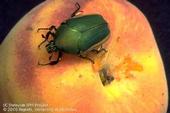
We've had many reports in the last two weeks from people asking what those big green, buzzing, beetles are. Green fruit beetles (Cotinis mutabilis) are members of the scarab beetle family and are sometimes known as fig beetles or figeater beetles. They are related to green June beetles (C. nitida) which are more commonly found in the South Eastern United States.
Green fruit beetles have a metallic green color and can be up to 1 1/3 inches long with prominent legs and antennae. The adults eat maturing soft fruit like figs and stone fruits, while the larvae (grubs) are found in compost or other decomposing matter. More on these occasional pests can be found on...
- Author: Elaine Lander
- Author: Karey Windbiel-Rojas
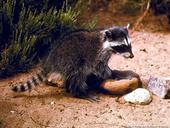
These days, most people are wearing masks when out in public for personal protection for themselves or others. In nature, there are a few pests that have their own type of face coverings, markings, or that other types of protective covers or behavior.
Below are a few such pests that you might be encountering now in your gardens and landscapes.
Masked Pests
Masked chafers are golden brown beetles with dark heads that give them their name. The adults are not typically considered pests although they do show up on window screens, in pools, or wander into the home. The immatures, white C-shaped grubs, are considers pests because they feed...
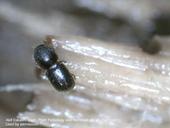
(Credit: A Eskalen)
Small beetles are causing big problems in Southern California. Two closely related species, the polyphagous shot hole borer and the Kuroshio shot hole borer (collectively referred to as invasive shot hole borers), have been attacking more than 60 species of trees. These invasive beetles create a series of tunnels, or galleries, where they lay eggs and cultivate a Fusarium fungus to use as a food source. The fungus causes branch dieback, general tree decline, and can result in tree death. The beetles have been found in Los Angeles, Orange, Riverside, San Bernardino, Ventura, Santa Barbara, and San Diego counties.
What should you look for?
Invasive shot hole...


